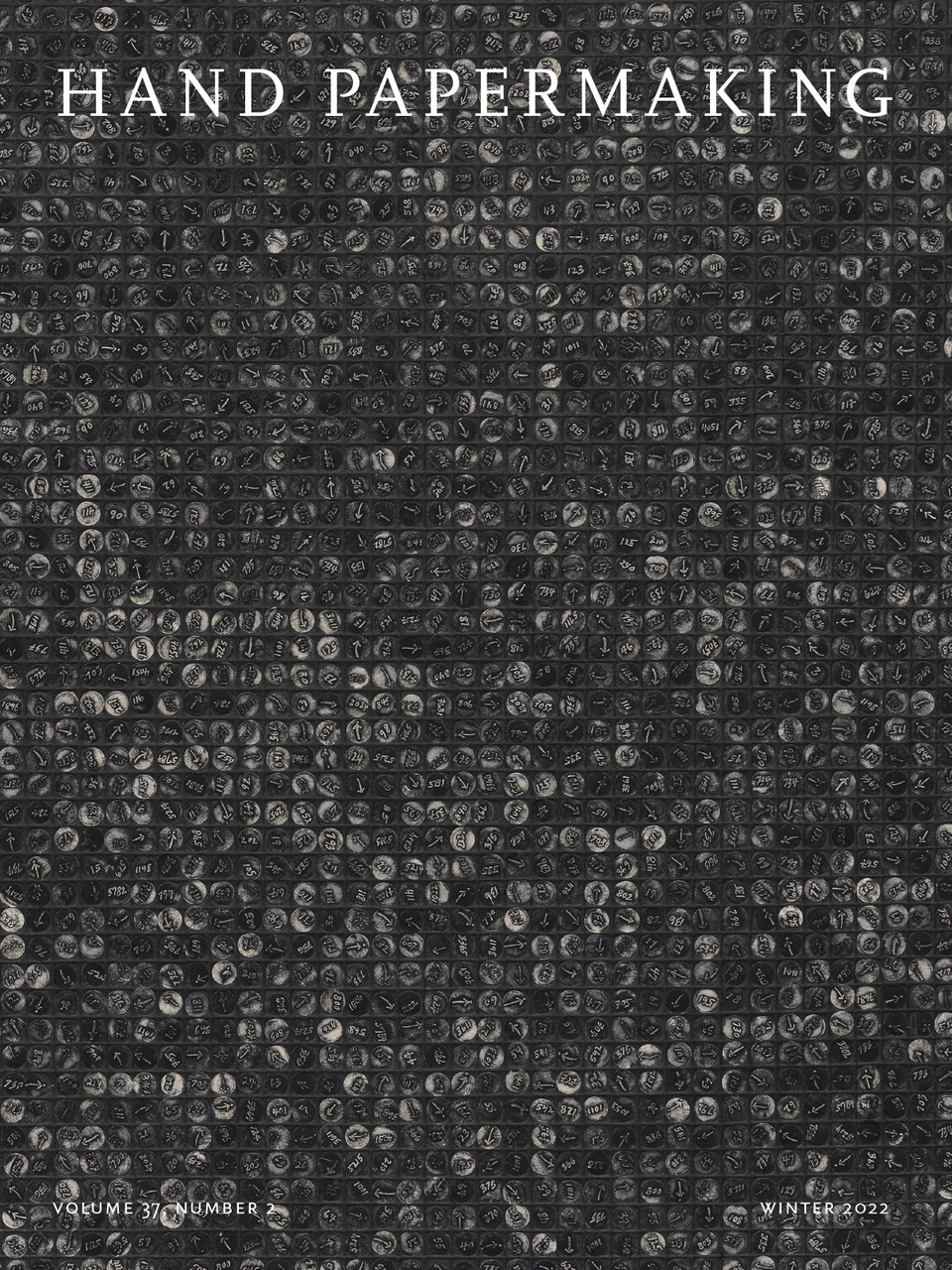This paper was made using the reverse pulp painting method discussed in my article. The colorful pulp-painted layer is half cotton and half abaca, beaten together for five hours and pigmented with natural earth pigments. The support layers are bleached abaca beaten for one and a half hours.
I built the paper on a mould lined with a prewetted cotton sheeting, cut to size, pulled smooth and tight, and held down with the deckle. The first layer is poured pulp paint, diluted to approximately 1 part pulp paint to 10 parts water. I poured the watered-down pulp paint in a somewhat random way, covering the whole surface. Once most of the water drained through the mould, I made the drop patterns, using a squirt bottle to apply the paint from some distance above the mould. Then I used a turkey baster to carefully apply a thin layer of the abaca pulp on top of the pulp-painted layers. I placed inclusions, mostly pieces of predried handmade paper, on top of that layer of pulp. I applied a final layer of abaca on top to cover the inclusions.
At this point, I could have left the paper to air dry on the mould, but to speed the process, I pressed the sheets in my hydraulic press and placed them on the floor of my studio to dry. Once dried, I peeled them off the cotton sheeting. They did not dry completely flat so I placed them on a felt and spritzed them with water to relax the fibers before pressing a second time. Tiny folds developed in the paper on the second pressing, which I find desirable. I dried the sheets in a restraint drier.






